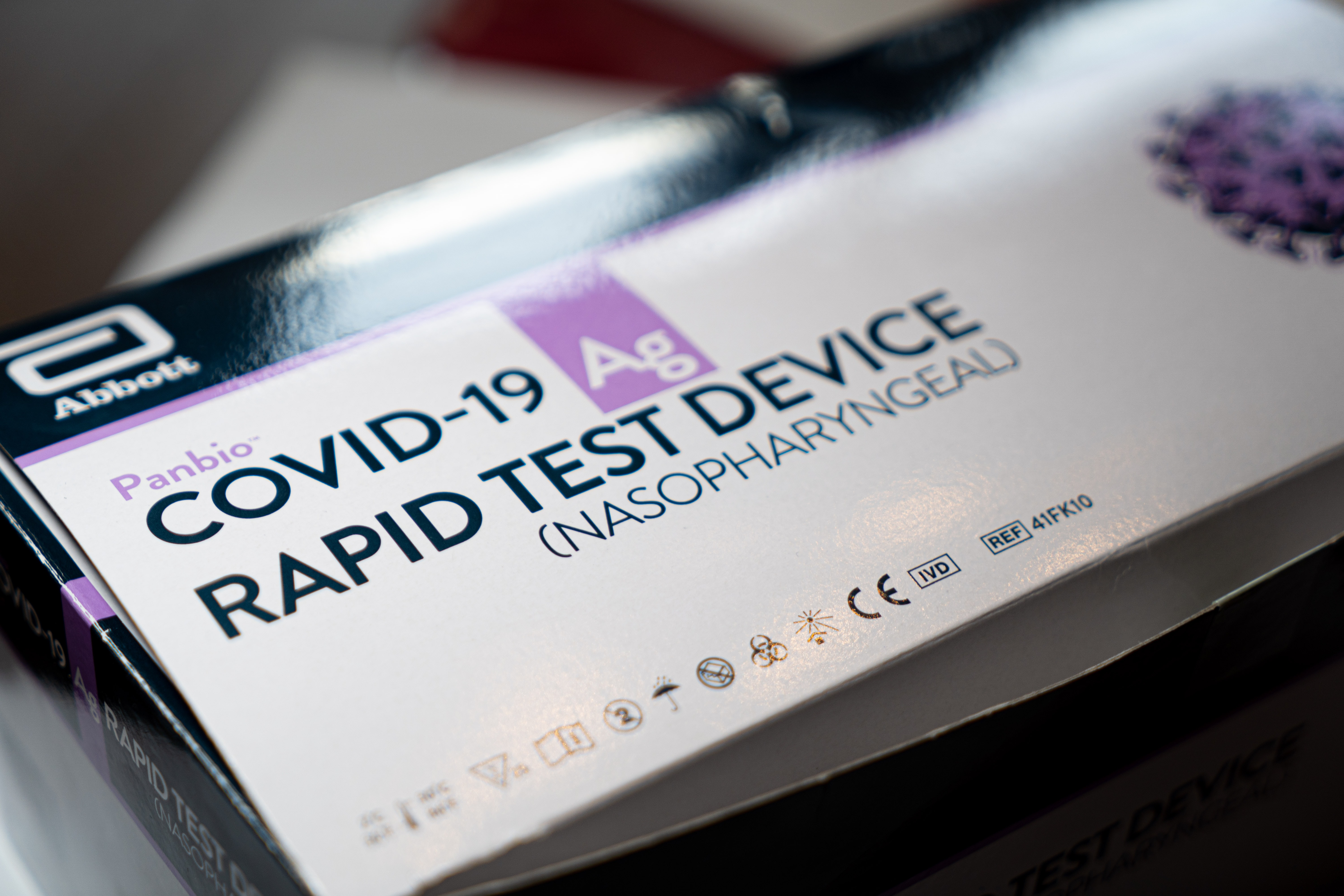Test to Stay: CDC Encourages COVID Prevention Strategy to Keep Students in Class
Some school districts across the country have implemented test-to-stay strategies since the beginning of the school year, but the CDC recently gave the mitigation strategy its strongest endorsement yet

The CDC recently endorsed test-to-stay strategies at schools as Omicron replaced Delta as the dominant coronavirus strain spreading in the U.S. The health agency cited new studies showing that the policy can allow students with COVID exposure to continue to attend class without increasing the spread of the coronavirus.
“These studies demonstrate that test-to-stay works to keep unvaccinated children in school safely,” CDC Director Rochelle Walensky said during a recent press briefing. “The CDC is updating our materials to help schools and parents know how to best implement this promising and now proven practice, along with our multi-layer prevention strategies that will help keep our children in the classroom safely.”
The strategy calls for repeatedly testing unvaccinated children who have a COVID exposure while allowing them to stay in school during their quarantine period provided they mask, remain symptom-free and continue to test negative.
Many school districts, including those in Massachusetts, started the year with a test-to-stay strategy in place. Other districts adopted similar strategies as the school year went on, but this is the most forceful endorsement the strategy has received from the CDC to date.
Gigi Kwik Gronvall, PhD, an immunologist at the Johns Hopkins Bloomberg School of Public Health, applauded the new guidelines. “If done well, it can be a really great way to follow the science,” she says. “It's really important to keep children in school.”
However, she cautions it will only be successful if implemented along with other mitigation strategies such as masking and good ventilation, which have helped limit the spread of the virus in schools. “In previous studies, only 2 percent of the students who were identified as close contacts actually did have COVID,” she says.
Evidence for Test To Stay
The CDC cited three new studies supporting test-to-stay (TTS) strategies.
Tech & Learning Newsletter
Tools and ideas to transform education. Sign up below.
- A cluster-randomized trial in the U.K. that compared 86 secondary schools and Institutions of Higher Education (IHE) that used daily testing for close contacts in lieu of quarantine to 76 secondary schools and IHEs using traditional quarantine for close contacts. Daily testing while remaining in-person did not differ from traditional quarantine in limiting SARS-CoV-2 transmission, resulting in similar rates of school absence and transmission to contacts, though only 42% of contacts participated in daily testing.
- A study in Los Angeles County in California compared COVID-19 student case rates (CRs) in 39 school districts that implemented TTS to 39 school districts using traditional quarantine from September 20 – October 31, 2021. The ratio of student COVID-19 case rates in TTS districts compared with non-TTS districts was similar before and after TTS adoption. Schools implementing TTS did not identify tertiary transmission among school-related outbreaks.
- In a study of 90 K-12 schools in Lake County, Illinois, that implemented TTS during the fall 2021 semester, secondary transmission remained low, at 1.5% among 1,035 students and staff members enrolled in the program. None of the secondary cases appeared to transmit SARS-CoV-2 to other school-based contacts. However, nine additional cases in five households were identified among household contacts of the 16 secondary cases
These new studies build on previous evidence in support of the policy, including a CDC study conducted at Utah schools last year.
“The strategy seems to work really well,” J. Lucian Davis, an MD and epidemiologist, at Yale School of Public Health, told Tech & Learning in September. “Testing in the classroom doesn't necessarily decrease the prevalence of cases, however, you get rid of all these lost days. So you have the same amount of COVID that's in the classroom, but a much larger number of kids are there.”
Test to Stay and Omicron
Omicron is predicted to cause case numbers to rise, and test to stay is part of the Biden administration’s strategy to keep students in school.
“One truth that the pandemic has underscored is that our students’ social and emotional growth and their academic development are best nurtured in-person in their classrooms with their peers and teachers,” said U.S. Secretary of Education Miguel Cardona in a statement about the new CDC data. “It’s encouraging that test-to-stay strategies are proving effective both in limiting transmission of the virus and in ensuring that students can remain learning in school, so that entire classrooms or schools do not have to shut down when a case of COVID-19 is discovered in the school community.”
However, Omicron may make more frequent tests necessary,
“For any test, there is a point at which you are going to be below the limits of detection, but it doesn't mean that you aren't infected,” Gronvall says. “It’s a bit like when you're looking at a sunrise, there's a point at which you cannot see the sun, and then all of a sudden, the sky is filled with light.”
Previous strains of the virus took a while to go from undetectable to infectious but Omicron seems to make this jump more quickly, increasing the odds that a contagious window could be missed if testing is not done frequently. “If you were to test in the morning, and then in the evening you're going to see people – that is more risky than it was before,” Gronvall says. “You should test closer to the event.”
Erik Ofgang is a Tech & Learning contributor. A journalist, author and educator, his work has appeared in The New York Times, the Washington Post, the Smithsonian, The Atlantic, and Associated Press. He currently teaches at Western Connecticut State University’s MFA program. While a staff writer at Connecticut Magazine he won a Society of Professional Journalism Award for his education reporting. He is interested in how humans learn and how technology can make that more effective.

